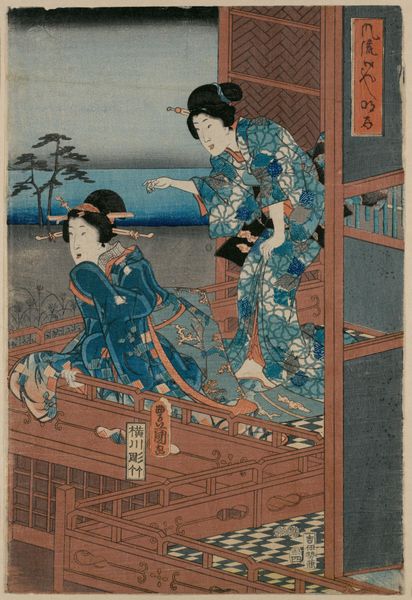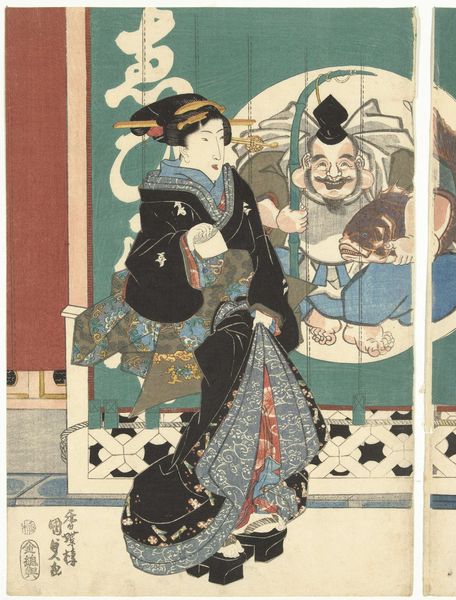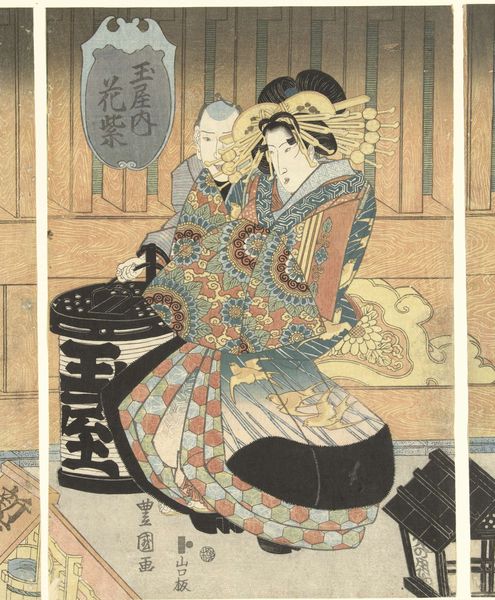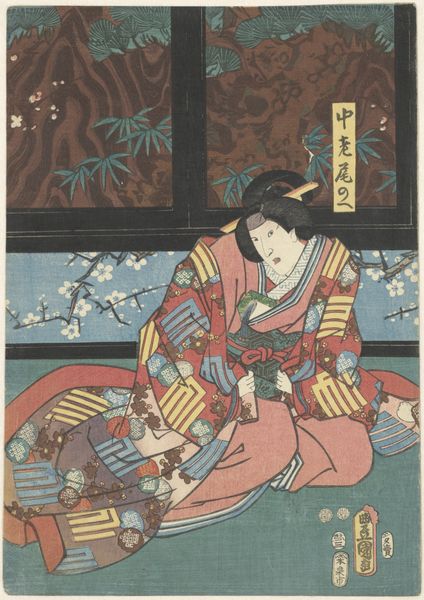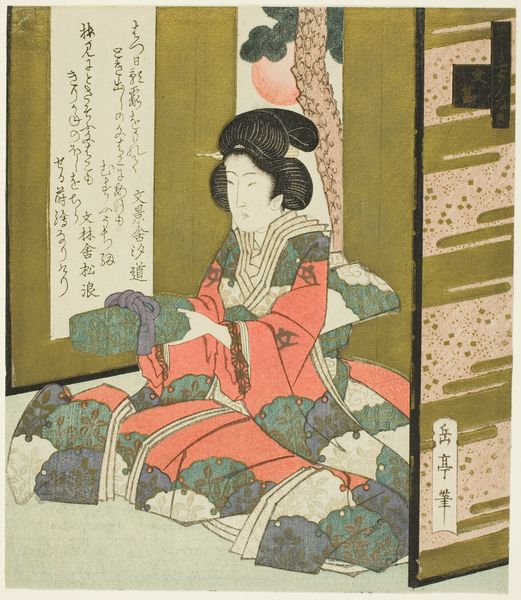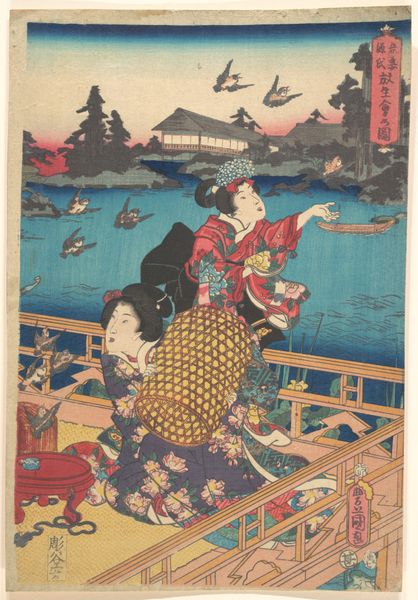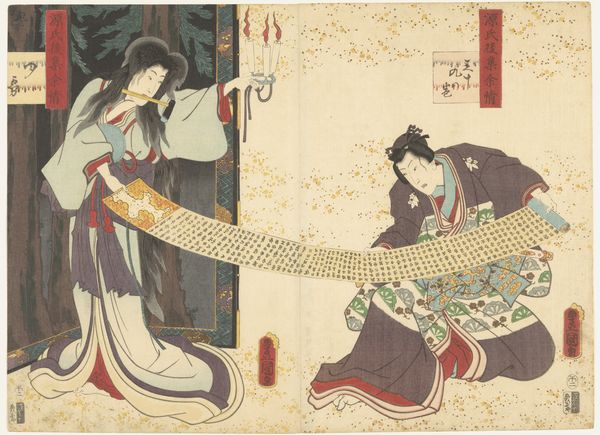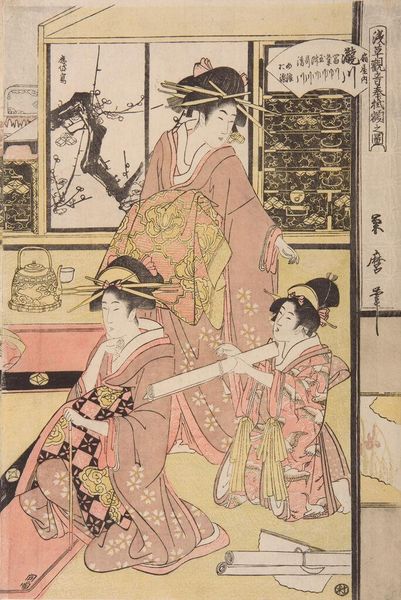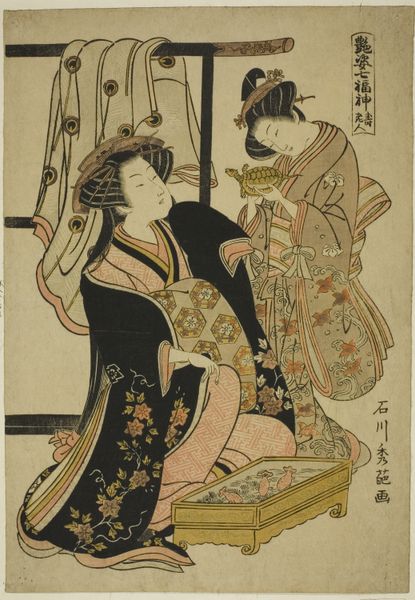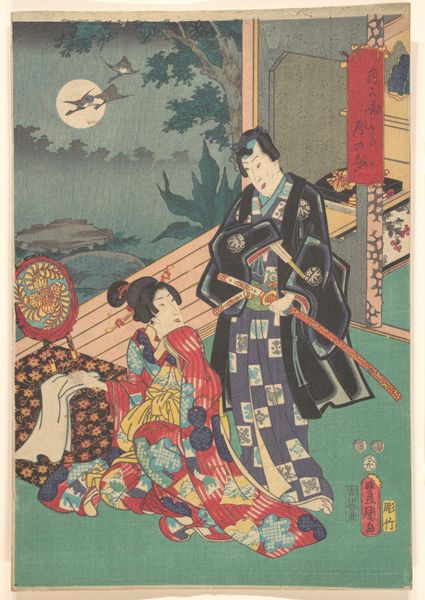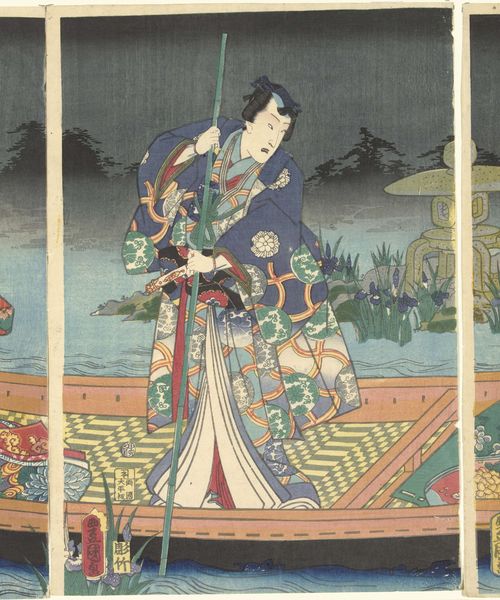
print, woodblock-print
#
portrait
#
mother
# print
#
asian-art
#
ukiyo-e
#
figuration
#
woodblock-print
#
line
#
genre-painting
#
watercolor
Dimensions: height 252 mm, width 363 mm
Copyright: Rijks Museum: Open Domain
Editor: This woodblock print, "Vrouwen bij de Ebisuya winkel," created around 1842 by Utagawa Kunisada, really strikes me with its emphasis on line and decorative pattern. The women almost seem like stylized dolls. What do you make of the composition here? Curator: The formal elements dictate the narrative. Observe how Kunisada uses line not just to define forms but to create fields of patterned surface. Notice how the interplay between the large areas of flat colour and the intricate textile patterns compress the space. Editor: It almost feels like there’s no depth at all. Is that deliberate? Curator: Precisely! The flattening of space is characteristic of Ukiyo-e. Now, consider the colour. The selection is not naturalistic but symbolic and conventionalized, reinforcing a reading that distances the subjects from any relatable reality. The print is designed less as a window onto the world, and more as a field for abstract arrangement of colour, shape, and line. How does this awareness inform our reading of the two figures, do you think? Editor: So, instead of thinking about who these women are or what they're doing, we should focus on the way their shapes and colours work together within the print itself? Curator: Exactly. Disengaging from the representational aspects allows us to perceive the inherent visual qualities: line, colour, pattern. The image functions more as a constructed artifact of artistic expression. Editor: That’s a fascinating way to look at it. I'll never look at Ukiyo-e prints the same way again! Curator: Indeed. Hopefully this heightened awareness allows for deeper readings into visual elements such as pattern or depth that otherwise may have gone unnoticed.
Comments
No comments
Be the first to comment and join the conversation on the ultimate creative platform.
